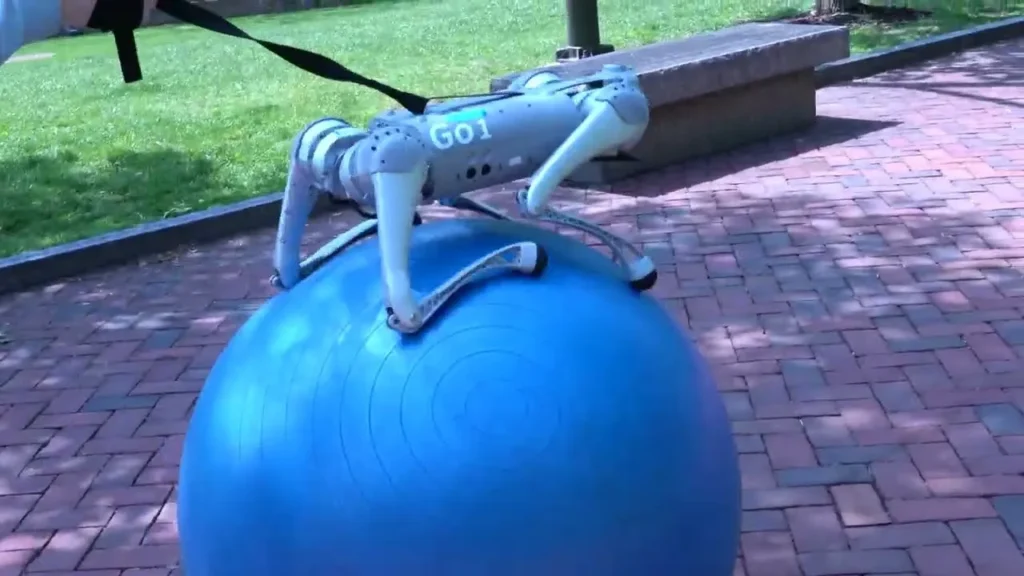Researchers have harnessed Nvidia’s Eureka platform, featuring a human-level reward design algorithm, to teach a quadruped robot the intricate art of balancing and walking atop a yoga ball. This breakthrough marks a significant leap in the realm of robotics training and deployment.

Derived from the Eureka platform, DrEureka emerges as a large language model (LLM) agent with specialized capabilities in crafting code to train robots within simulations. Its mission: to bridge the gap between virtual environments and real-world deployment by developing solutions that seamlessly transition from simulation to practical implementation.
Researchers tout DrEureka’s seamless operation, boasting its ability to automate the entire process, from initial skill acquisition in simulation to real-world execution. This streamlined approach ensures a smooth and efficient transition from virtual training environments to practical deployment scenarios.
In a remarkable display of efficiency, the research team utilized DrEureka to train the quadruped robot in simulation and effortlessly transferred its skills to real-world conditions. Astonishingly, the robot successfully completed its task on the first attempt, requiring no additional fine-tuning. Details of this groundbreaking study, conducted by researchers from the University of Pennsylvania, University of Texas at Austin, and Nvidia, have been made publicly available on GitHub, shedding light on the innovative methodologies employed in automating sim-to-real robotics.
While sim-to-real methodologies hold immense promise for scaling up robot skill acquisition, they often entail manual configuration and adjustment of task reward functions and simulation physics parameters. DrEureka’s emergence aims to address these challenges, paving the way for accelerated progress with minimal human effort.
DrEureka’s cutting-edge capabilities extend beyond traditional sim-to-real approaches. By integrating safety instructions and optimizing real-world performance through domain randomization parameters, it sets a new standard for robotic training and deployment.
Looking ahead, researchers envision further enhancements to DrEureka’s capabilities. By incorporating real-world failures as feedback and integrating additional sensory inputs such as vision, they aim to push the boundaries of sim-to-real robotics, unlocking new possibilities in the field.
